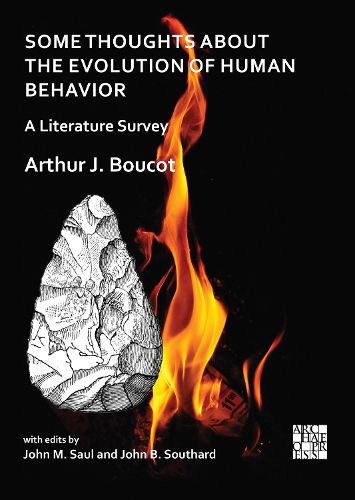Readings Newsletter
Become a Readings Member to make your shopping experience even easier.
Sign in or sign up for free!
You’re not far away from qualifying for FREE standard shipping within Australia
You’ve qualified for FREE standard shipping within Australia
The cart is loading…






On his death, Arthur Boucot (1924-2017) left an unfinished manuscript in which he surveyed the skeletal, behavioural, and cultural changes that have characterized Homo from its first recognition in the Late Pliocene to the present. The subjects he treated were as varied as the preparation of food for infants, the length of intestines, hafting, plastering, use of flint and metals, the domestication of grains and animals, and the prevalence of parasitic diseases. His text repeatedly notes the difficulties imposed by the enormous gaps in both fossil and archaeological records. Boucot deduced a continuity in basic human behaviours from the Oldowan and Acheulian into modern forms, and made a point of including Neandertals and Denisovans. But he also pointed out that morphological changes in successive species of Homo do not coincide in time with major changes in lithic technologies. Boucot concluded that a quantum evolutionary gap separates hominins from the great apes: that members of our line were sapient and had been using language long before they became sapiens. In his text he also indicates his concern for changes to the environment wrought by human activities. The results of this late-life effort, edited after his death, provide a heavily referenced sourcebook for future workers in diverse fields.
$9.00 standard shipping within Australia
FREE standard shipping within Australia for orders over $100.00
Express & International shipping calculated at checkout
On his death, Arthur Boucot (1924-2017) left an unfinished manuscript in which he surveyed the skeletal, behavioural, and cultural changes that have characterized Homo from its first recognition in the Late Pliocene to the present. The subjects he treated were as varied as the preparation of food for infants, the length of intestines, hafting, plastering, use of flint and metals, the domestication of grains and animals, and the prevalence of parasitic diseases. His text repeatedly notes the difficulties imposed by the enormous gaps in both fossil and archaeological records. Boucot deduced a continuity in basic human behaviours from the Oldowan and Acheulian into modern forms, and made a point of including Neandertals and Denisovans. But he also pointed out that morphological changes in successive species of Homo do not coincide in time with major changes in lithic technologies. Boucot concluded that a quantum evolutionary gap separates hominins from the great apes: that members of our line were sapient and had been using language long before they became sapiens. In his text he also indicates his concern for changes to the environment wrought by human activities. The results of this late-life effort, edited after his death, provide a heavily referenced sourcebook for future workers in diverse fields.